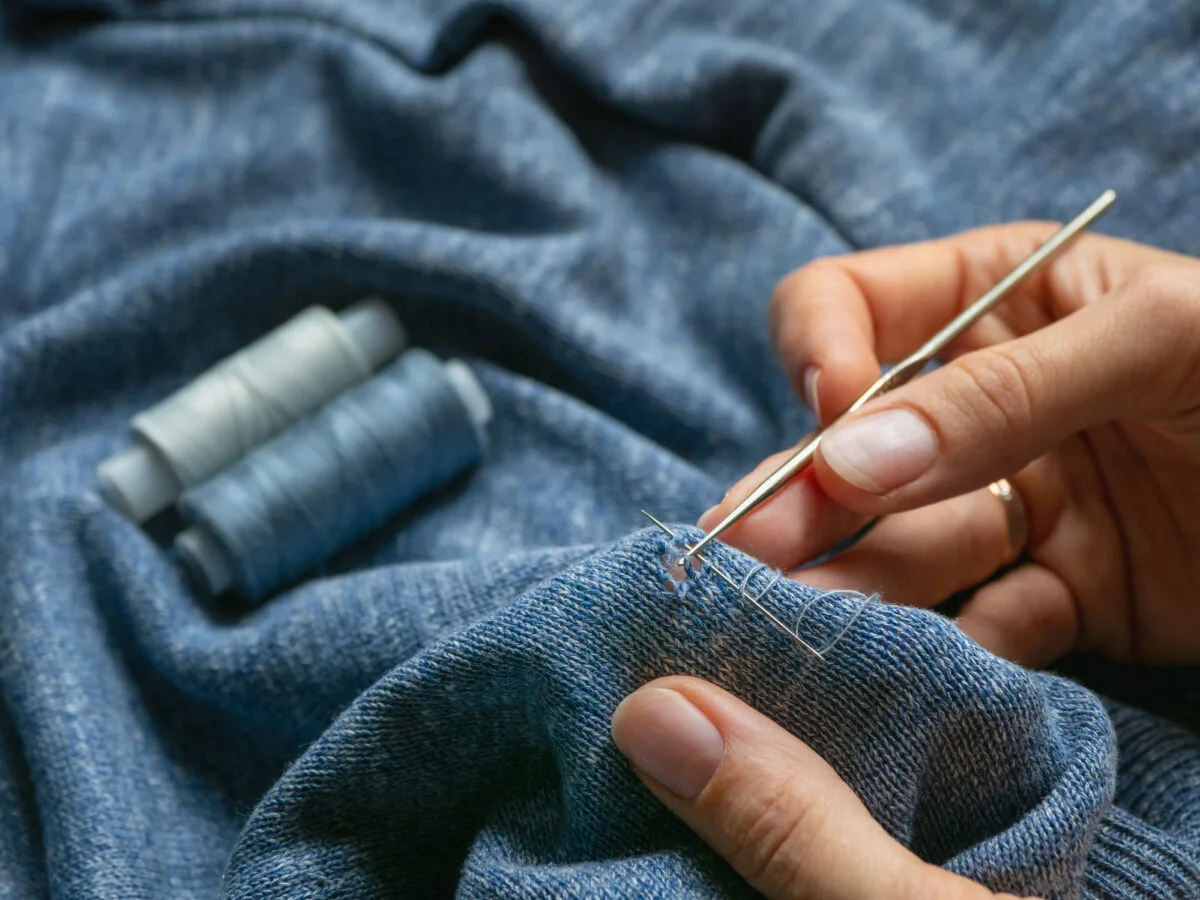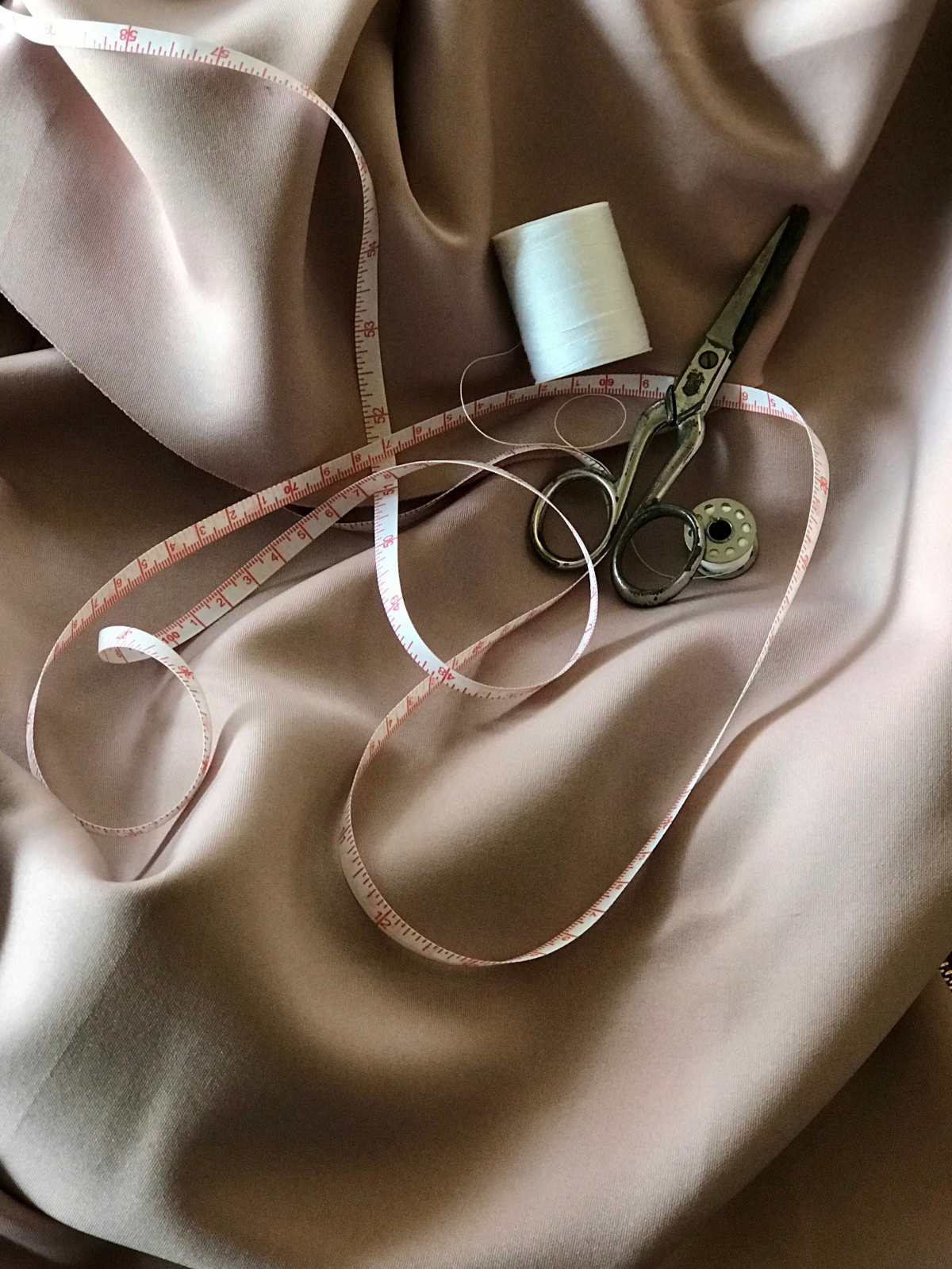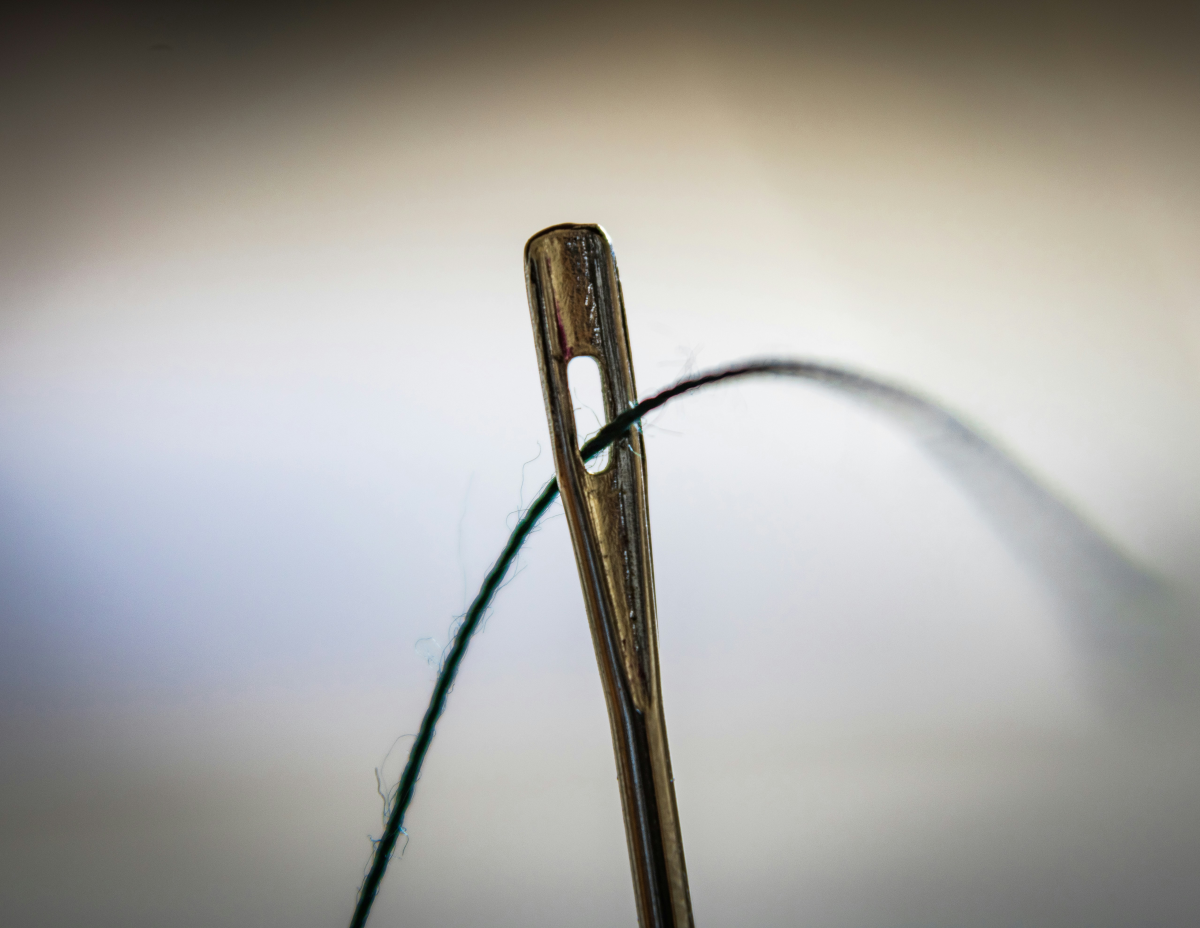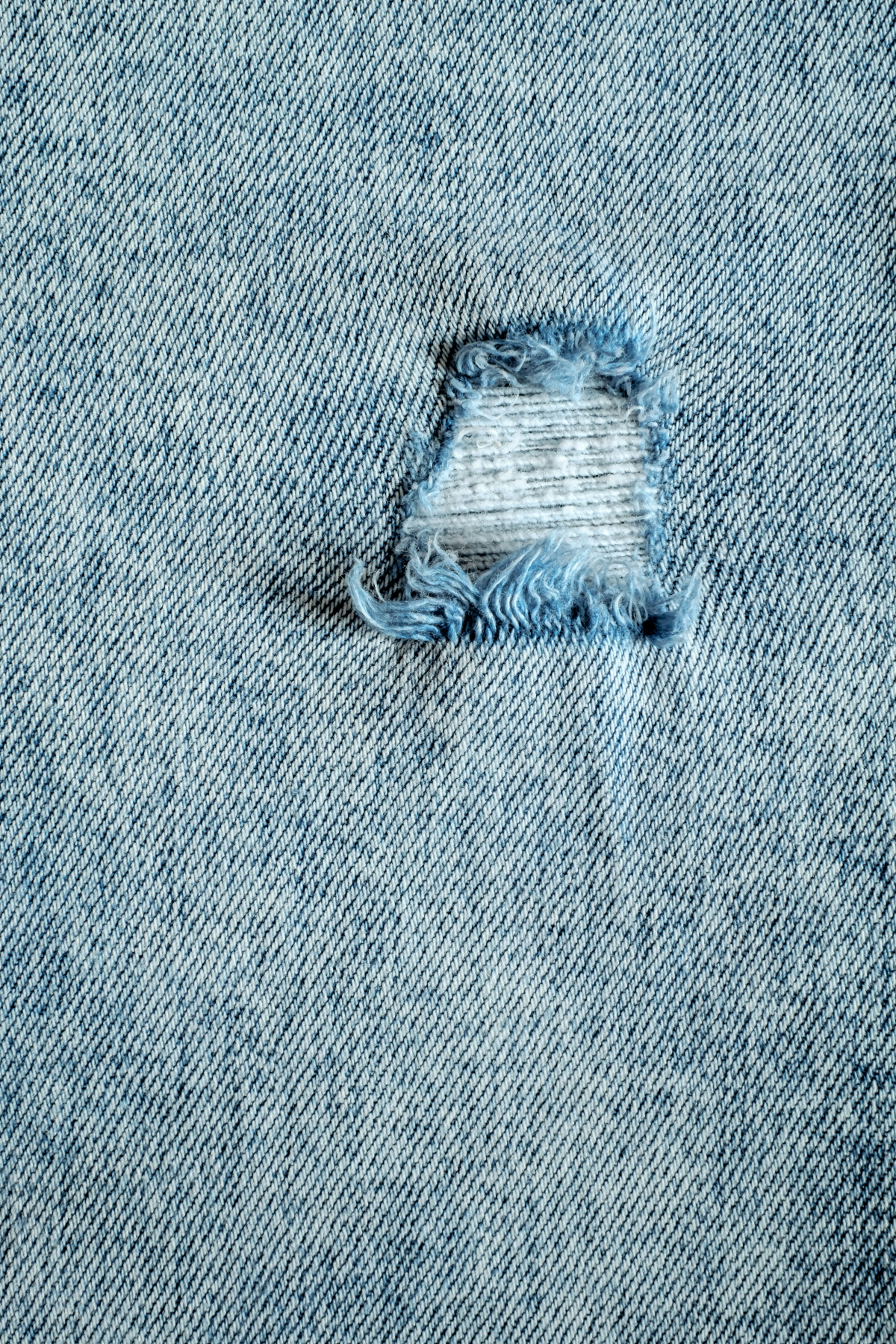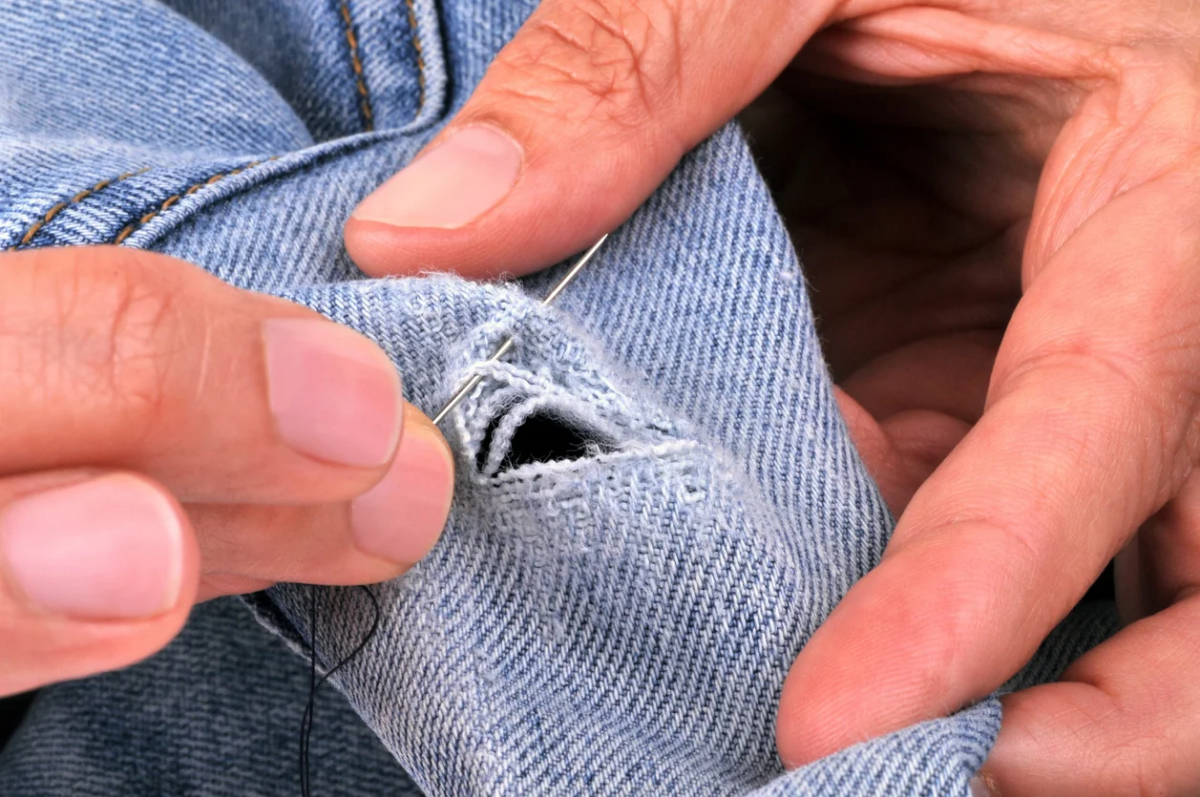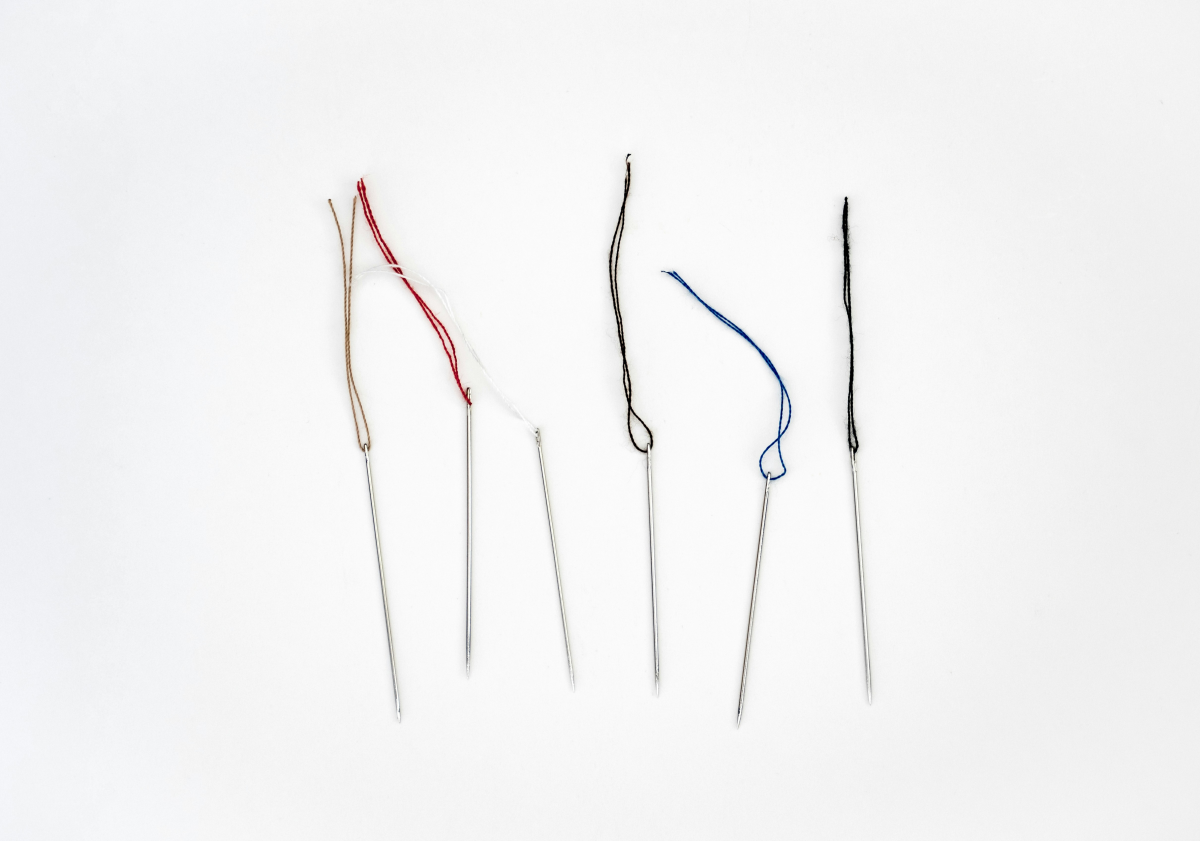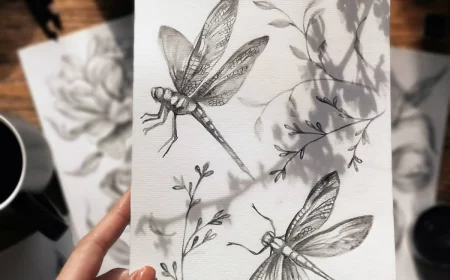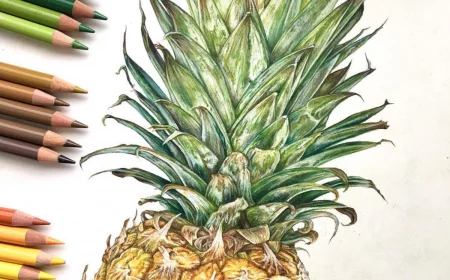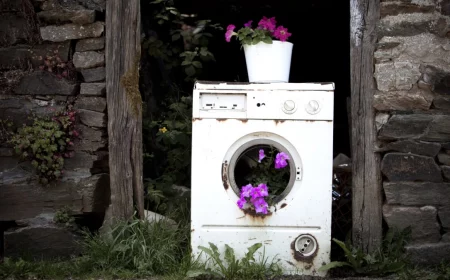How To Sew A Hole: A Simple Step-by-Step Guide
I’m sure many of us have endured the gut-wrenching moment of discovering a tear in our favorite shirt or pants. It feels like an irreversible loss, doesn’t it? While I’ve never been the most graceful with a needle and thread, stumbling more often than not, the necessity of fixing my beloved garments forced me to pick up sewing. If you find yourself in a similar boat, fret not. Today, I’m here to teach you how to sew a hole, guided by the wisdom of seasoned experts. This skill has saved me from parting with many treasured items, and I’m excited to share these insights with you.
You can turn despair into repair with a bit of thread and patience
In this article
How To Sew a Hole
Staring down at yet another unexpected hole in my favorite pair of jeans, I felt a familiar pang of frustration. It seemed like no matter how carefully I wore my clothes, these tiny intruders always found their way in. Determined not to let my wardrobe fall victim to these small but mighty adversaries, I embarked on a mission to master the art of sewing holes. I even turned it into a new slow living hobby! Hours spent diving into tutorials from experts like Cinderella Sew, coupled with invaluable lessons from my grandma’s seasoned hands, gradually transformed my approach to these fabric fissures. Now, armed with a needle, thread, and a collection of tips and tricks that have turned me from a novice into a confident mender, I’m here to share the wisdom that turned my despair into empowerment.
Dive into the world of mending
Step 1: Gather your supplies
First things first, you’ll need a sewing needle, thread, a needle threader (if threading needles isn’t your forte), and a pair of scissors. These basic tools are your best friends in the battle against wear and tear. Keep in mind that the key to a seamless repair lies in understanding the nature of the hole. Smaller tears, especially along seams, are prime candidates for this method. Choosing a thread that matches your fabric color can make your stitches nearly invisible. Additionally, the thickness of your needle should correspond to your fabric type—a sturdy needle for denim and a finer one for silks.
It’s like gearing up for a mini-adventure
Step 2: Prepare the thread and needle
Begin by cutting a length of thread that’s about 18-24 inches long. This length is manageable and helps to reduce tangling as you sew. Thread your needle, pulling the thread through until you have equal lengths on both sides, effectively doubling your thread for added strength. Tying a knot at the end of your thread can be done by wrapping the thread around your finger, then rolling it off and pulling the ends to tighten. If you’re struggling to thread the needle, a needle threader can make this step much easier, allowing you to pull the thread through the needle’s eye with minimal fuss.
Threading a needle feels like trying to thread a camel through the eye of a needle
Step 3: Prepare the fabric
Before you start sewing, it’s important to prepare the fabric around the hole. Lay the fabric flat and smooth out any wrinkles or puckers to ensure an even repair. Flip the garmet inside out. Carefully trim any frays or loose threads around the hole’s edges to prevent further damage and create a clean working area. If possible, turn the garment inside out so the bulk of your stitching will be on the inside, hidden from view. This also allows you to start your stitching from the inside, keeping the initial knot concealed.
Smoothing out the fabric is a must
Step 4: Start stitching
When you’re ready to start sewing, position your initial stitch about ⅛ inch from the edge of the hole. This placement is close enough to secure the fabric without risking additional tears. If you’re dealing with a round hole, you can start at any point around its circumference. For linear tears, it’s best to start at one end and work your way to the other, systematically closing the tear. Push the needle up from the underside of the fabric until the knot stops it from pulling through completely, ensuring the stitch is secure.
Placing that first stitch is like the first step on the moon
Step 5: Sew the hole closed
The key to a discreet mend is to align the edges of the hole without overlapping the fabric. This helps avoid bunching or distorting the fabric’s appearance. Using a “zig-zag” or “whip stitch” pattern, insert the needle directly across from your starting point on the opposite side of the hole and then back to the starting side. Keep the stitches tight, even, and close to the edge of the hole for a repair that’s both durable and barely noticeable.
Stitch across the hole in a zig-zag pattern
Step 6: Finish sewing
Once the hole is fully closed, finish your last stitch on the inside of the garment to hide the final knot. Secure the thread by creating a loop near the fabric with the thread, passing the needle through the loop, and pulling tight to form a knot against the fabric. Repeat this a few times to ensure the stitching is secure. Trim any excess thread close to the knot to keep your repair neat.
Secure your stitching with a few knots on the inside
I won’t lie and say that sewing has become my favorite pastime, but there’s undeniable satisfaction in breathing new life into a garment that might have otherwise ended up in the bin. From a frayed sleeve of a cherished sweater to the unexpected tear in a well-worn pair of jeans. Mastering the simple art of sewing a hole has not only saved my wardrobe. It has also taught me the value of repair over replacement. Whether you’re a novice with a needle or looking to refine your skills, I hope this guide empowers you to tackle those inevitable tears with confidence. After all, a little thread and patience can go a long way in keeping your favorite pieces alive and well for years to come.
Sewing a hole is a simple, rewarding skill
FAQs
What is the best stitch for sewing a hole?
The best stitch for sewing a hole often depends on the fabric and the size of the hole, but a darning stitch or a simple whip stitch are commonly recommended for their strength and simplicity. The darning stitch involves weaving thread over and under the area of the hole, creating a fabric-like structure that covers the gap. For smaller holes, the whip stitch is effective for its tight, circular pattern that pulls the fabric together, making the repair less noticeable.
How do you sew a hole without it showing?
To sew a hole without it showing, select a thread that closely matches the color of the fabric. Use fine, tight stitches like the ladder stitch or the invisible stitch, working from the inside of the garment to keep the repair as inconspicuous as possible. The goal is to align the fabric edges neatly and sew with small, even stitches that blend into the fabric, making the repair barely visible.
Can you sew a small hole?
Yes, you can sew a small hole, and doing so is relatively straightforward with the right technique. Small holes can be sewn closed with fine stitches such as the whip stitch or by using a darning technique for knit fabrics. The key is to use a thread that matches the fabric and to make small, tight stitches to close the hole neatly.
Which is the hardest stitch?
Among the various stitches used in sewing and embroidery, the bullion knot or bullion stitch is often considered one of the hardest stitches. It involves wrapping the thread around the needle multiple times and then pulling the needle and thread through the coiled thread carefully to form a textured knot. Its complexity lies in managing the tension and coils evenly to create a uniform appearance.
What is the easiest stitch to sew?
The running stitch is widely considered the easiest stitch to sew. It is a basic stitch that involves pushing the needle in and out of the fabric in a straight line, making it great for beginners to learn and practice. Despite its simplicity, the running stitch is versatile and can be used for basting, seaming, and decorative purposes.
How do you sew on a patch?
To sew on a patch, start by positioning it on the garment at the desired location. Optionally, you can apply iron-on adhesive to its back. This adds stability. Smooth out the fabric underneath. Then, thread your needle with a color that matches either the patch or the garment. After threading, tie a knot at the thread’s end. If you’re not using adhesive, it’s crucial to secure the patch in place with pins. This prevents shifting. Begin sewing from the inside of the garment. This technique helps to conceal the knot. Opt for a small running stitch or whip stitch. These choices are effective for securing the patch.
Use thread that matches and make your stitches small and even

